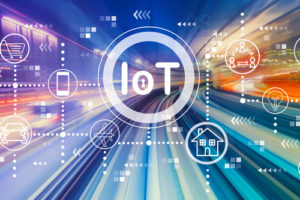Like every other organization these days, higher education facilities can use IoT technology to streamline operations and enhance the user experience — with the users, in this case, being both educators and students.
Technologies like connected devices, collaboration and video platforms, and remote monitoring tools can help educators teach more effectively, boost student engagement, and ensure IT can keep everything up and running.
Related content: How to secure IoT on campus
These three applications are just a few ways universities can combine IoT, hardware and software to promote learning and ensure seamless classroom experiences.
1. Active learning formats
There’s a new buzzword in education every year, and the hottest trend of the moment is to move from the “sage-on-the-stage” style of teaching and towards active learning methodologies. There are several different models, SCALE-UP and TEAL (technology-enabled active learning) to name a few.
Instead of separating classroom discussion and lab work, active learning blends lectures and hands-on active and group learning in a single lesson: Instructors teaching large sections can deliver lectures and coordinate practical work and group discussion, while students gain hands-on experience by using technology to visualize concepts and carry out group work or experiments.
Instructors aren’t stationed at the front of the room, but instead walk around to view students’ work and assess their levels of understanding, speaking into a wireless microphone when they want to address the entire room. Students sit in small groups at tables where they work together on labs or projects. Tables incorporate technology so students can project from their laptops and share content with the class, and an instructor station in the middle of the room controls interconnected video sources and displays.
Technologies like digital displays, projectors, interactive whiteboards, wireless room controls, high-definition cameras, and more can be incorporated as the subject requires, and connecting all of these technologies creates an in-classroom IoT. The data gleaned from these devices can allow instructors to see what technologies are best suited for student learning, while IT staff can gain insights on how classrooms are being used.
2. Hybrid learning
IoT has made it possible for some universities to experiment with hybrid learning environments, in which students can attend an instructor’s class virtually and remotely as well as in person. A hybrid class could have just a few students who might be studying abroad or on an internship in another city, while everyone else is in one classroom, or it could be an entire class of people who are all in different locations.
Hybrid classrooms can use video conferencing technologies and collaboration platforms — which boost engagement and encourage active participation — connected to cameras, projectors, and digital whiteboards via IoT, so even students participating virtually can get almost the same experience of those in the classroom. Instructors can teach “live” in either their homes/offices or in a classroom (depending on whether the class is fully remote or just remote learning-enabled). All participants, both remote and “in person,” can ask and answer questions and work with other students via collaboration platforms and connected technology.
For students unable to attend class during the specified time for whatever reason, teachers can automate recording software using an IoT solution. This allows students to attend their virtual classes from any device later in the day or week, so they don’t miss anything. While they won’t be able to participate themselves because the class already occurred, they’ll still benefit from seeing the virtual discussions and their peers’ collaboration.
3. IT help desks
Higher education facilities often stretch across sprawling campuses, and large public universities can have thousands of individual classrooms ranging from small huddle spaces to 500-person auditoriums. If a piece of equipment (e.g., a projector, digital display or collaboration device) stops working, it can take several minutes for an IT person to physically get across campus and get it back up and running — which is an issue for both teachers and students, because even one minute wasted causes disruptions to a classroom.
That has led some universities to implement remote monitoring and managing technologies that remove the need for IT to physically be in a space to prevent or fix problems. Smart monitoring software tracks the health and performance of equipment, keeps track of preventive maintenance schedules, and flags when something is experiencing an issue — all of which can help IT stay ahead of the game.
If equipment does go down unexpectedly, having a remote help desk allows IT to be virtually present in every classroom on campus. With remote connections to classroom devices via IoT, IT staff can operate equipment like touch screens as if they were in front of them, as well as gain access to other devices like remote controllers, webcams and more.
By connecting all campus devices to an IT network operations center, IT staff also can ensure the proper cybersecurity measures (encryption, authentication and so on) are in place. Security is a real concern when it comes to IoT endpoints, and keeping hackers out of devices is just as important as keeping them up and running.
Final thoughts
With so many ways for universities to enhance their classrooms with IoT technology, a best practice is to design a curriculum first, then work with the IT department and expert technology providers to ensure they can specify the technology that will help achieve the right outcomes.
Don’t forget to measure student metrics and be ready to make adjustments as needed — while technology is now critical to have in higher learning environments, it’s equally as critical to ensure students are engaged and able to learn.

